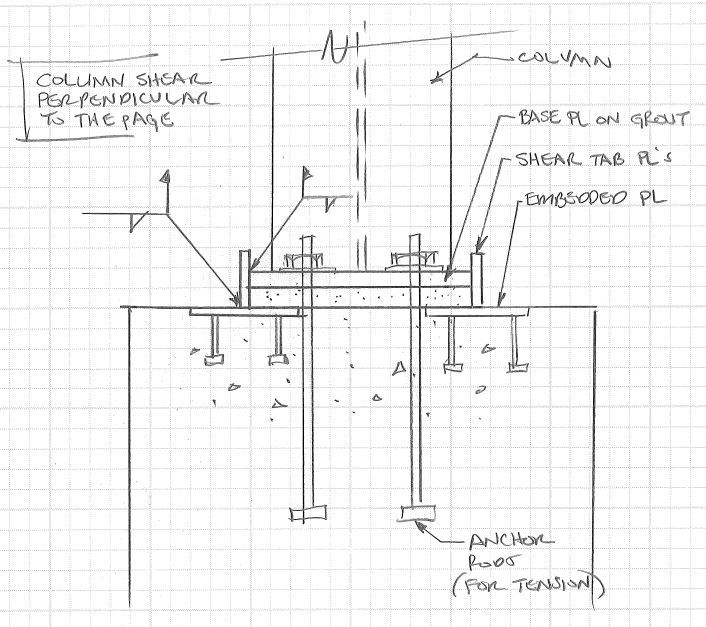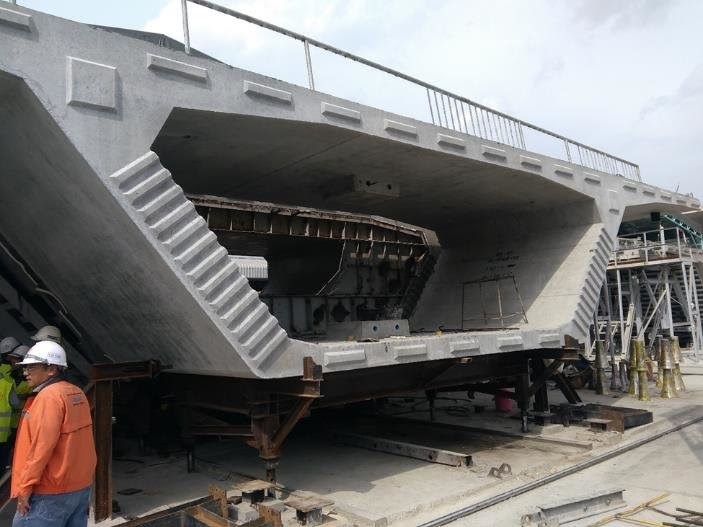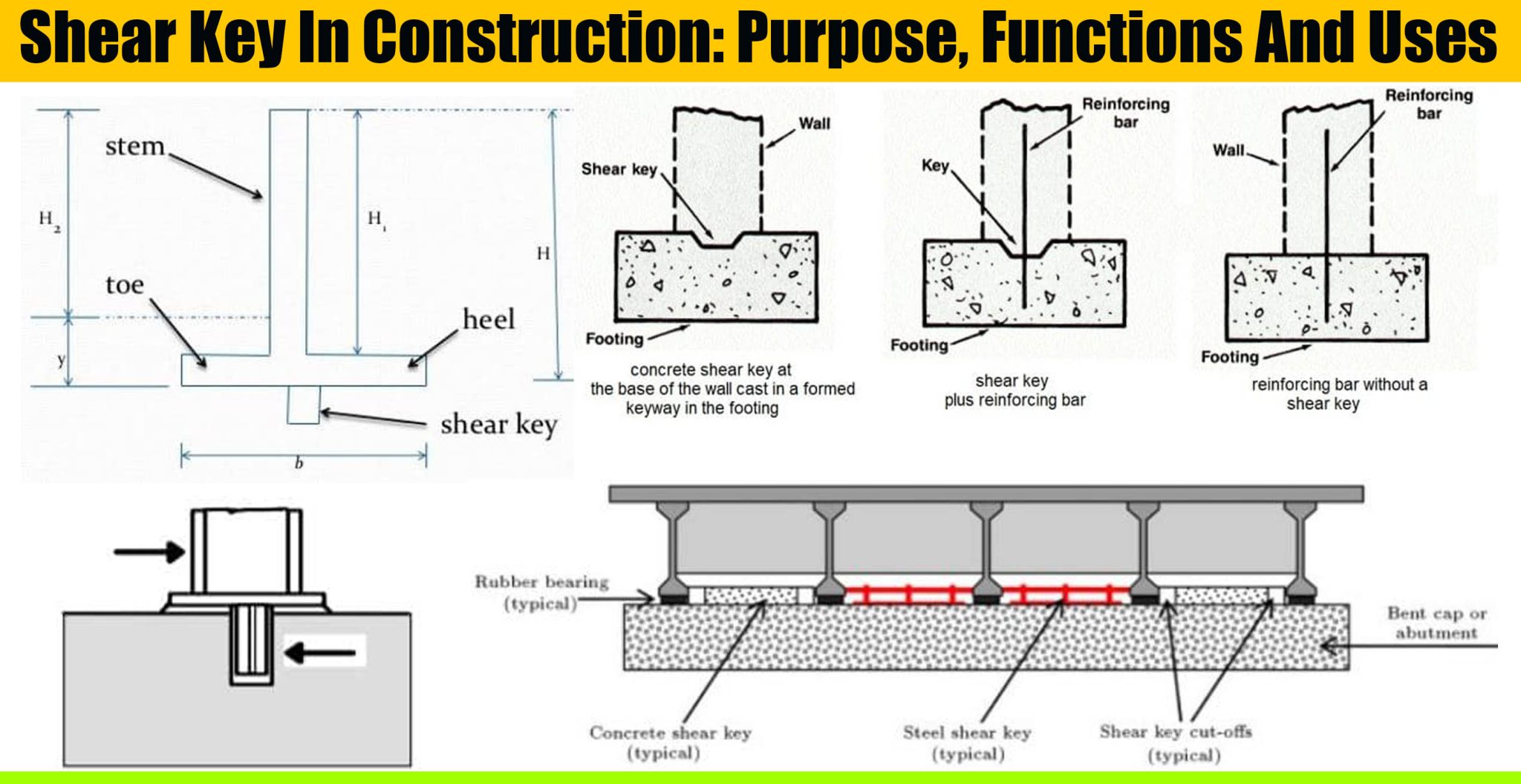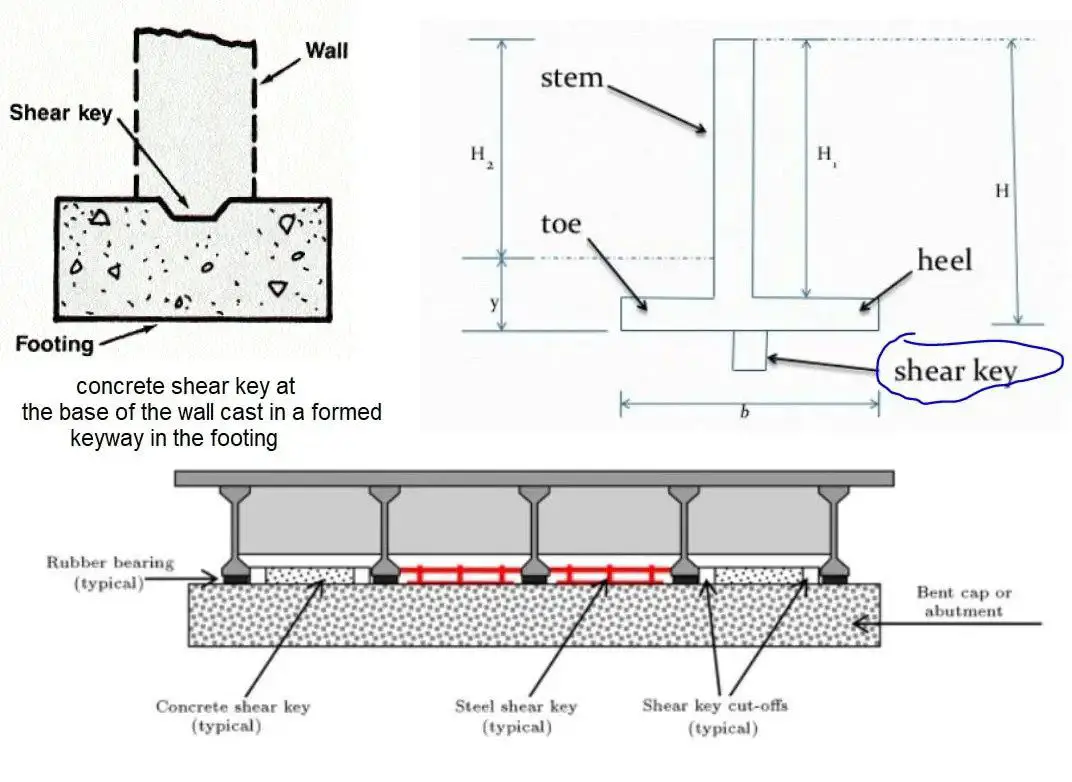
Universal Shear Key ShearCraft
The shear key is a structural element designed and provided in different structures to provide resistance against lateral forces like earthquake forces and sliding forces in the different structures such as bridges, retaining walls, the basement of residential buildings, precast buildings and culverts, masonry walls in seismic regions, and steel.

Shear Key Joint Strength Of Materials Fracture
The key purpose of the shear key are to maintain the integrity of the structure. In general, we do not transfer the curved moment through one cutter key when we allowed transferring the shear forces. Here is the step-by-step procedure to design piled/unpiled counterfort retainer walls using ASDIP RETAIN structural software.

Solving a Structural Issue Graphic
Lots more. So, if you're ready to go with shear key, this article is for you. Let's get in right now. What is Shear Key? The shear key is a structural component primarily used to stabilize the structure against lateral loads. Shear is applied depending upon the type of construction project and the type of loading.

What is shear key how to place it. Its uses and importance YouTube
A shear key, also known as a shear lug or a keyway, is a structural element used to connect or anchor two adjacent structural members together. It serves as a transfer mechanism for lateral loads, preventing the two members from sliding or shifting relative to each other. The primary purpose of a shear key is to improve the structural stability.

Why Shear Key is Provided at bottom of Retaining Wall Shear key Design YouTube
To compare the behavior of 3D-printed shear key and conventional precast shear key, Table 4 compares the 3D-printed shear key in M-DS-k54 and selected precast concrete specimens, M2.0-E-K1-N and K1-02 respectively tested by Zhi et al. (2020) and Jiang et al. (2015). This table summarizes the key parameters and normalized shear strengths of these specimens and shows that 3DPC shear keys had a.

1.8 lb. EPS Shear Key Forms Geofoam, Styrofoam, EPS & Polystyrene Universal Construction Foam
Steel shear key. The steel shear key sets are shown in Fig. 1a, including a convex key and a concave key. The concave-convex keys are connected by a mortise and a tenon, and the anchor heads are.

Shear Key Design Structural engineering general discussion EngTips
Design of Shear key: If the wall is not safe against sliding, then a shear key is to be provided. It is provided either below the stem or at the end of heel. It should not be provided at the end of toe. If shear key is provided, then it should be designed taking the effect of passive pressure.

shear key
The second shear key shape described above is the most common shear key shape that is currently used in Canada (C-SK) and is modelled in this paper. The key is shown in Fig. 1 a. The shear key has a diamond shape with 25 mm opening at the top surface of the joint after placing the box beams side by side including a 10 mm opening that is usually created between beams for placement requirements.

Shear Key In Construction Purpose, Functions And Uses Engineering Discoveries
Find Shear Keys stock images in HD and millions of other royalty-free stock photos, 3D objects, illustrations and vectors in the Shutterstock collection. Thousands of new, high-quality pictures added every day.

Shear Key in Construction Purpose, Classification, and Uses
Download : Download high-res image (113KB) Download : Download full-size image; Fig. 1. Typical shear key failure in shear keys during the 2010 Maule earthquake: diagonal tension. Independencia Highway Bridge (Photo: M. Hube).

Shear Key Friction Classical Mechanics
Shear keys are commonly designed on contraction to limit joint slipping and improve the overall seismic behavior of arch dams. However, shear keys are usually over-simplified in the current nonlinear geometric features and progressive failure of shear keys can be naturally considered using the contact boundary model and the plastic-damage model.

What is shear key in column Why we Provide Shear Key in Construction YouTube
The shear key should be constructed 0.91 m from the tow of the footing, with width of 0.508 m and depth of 0.381 m. Design of shear key in bridge In bridges to provide support to the superstructure under lateral loads, the shear key is placed in the abutments of the structure.

What is Shear Key ? Why we provide it in Column ? YouTube
Shear connections between a basement wall and its footing may be made by: (A) a concrete shear key at the base of the wall cast in a formed keyway in the footing; (B) a shear key plus reinforcing bar; or (C) the reinforcing bar without a shear key. the wood.

Best shear key briggs and stratton The Best Home
2.3 Shear Joints Shear forces can be transferred between concrete elements by ad-hesion or friction at a joint interface, a shear-key effect at indented joint faces, the dowel action of transverse steel bars, pins and bolts, etc. Shear keys are generally formed by providing the precast mem-bers with indented joint faces.

Shear Key for 100DM / 100DX Teledyne ISCO
Interbloc's shear key uses a cruciform tongue and groove interlocking design, providing an interlocking key in both horizontal directions. (On the left image is the shear key in blue, on the right is the shear key on Interbloc) When you're installing a layer on top of your base layer, you'll find the blocks positively locate.

Shear Key Bar, For Bridges at Rs 2100 in Palwal ID 27145296948
˜e steel shear key sets are shown in Fig. 1a, including a convex key and a concave key. e concave-convex keys are connected by a mortise and a tenon, and the anchor heads are embedded separately in